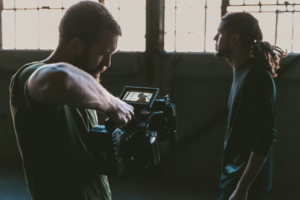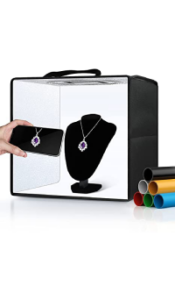Coming up with a movie idea can be a daunting task when you’re a person who has writer’s block or a person who is just not inspired to write your own story. For inspiration to strike, split your movie idea into parts so that you can also focus on subplots.
In this article, let’s look into how you can generate ideas and put them together to form your movie script.
How to brainstorm ideas for your movie script:
Here are some ways you can brainstorm for ideas for your movie script:
- Decide on a genre: Movie genres help you come up with a movie plot, also helping you brainstorm at the same time for ideas. Genres are categories for films, and can also be a combination of two genres like Romantic- Comedy, Sci-fi, etc.Ex: If you want to make a Romantic Comedy, you have to have a male and female lead who do not appear to fall in love with each other (they probably have different ideas about life). Below is an example of a Biopic:
- WRITE IT DOWN! An idea can strike anytime- when you’re out with friends, at the park or at work; so it is necessary to write them down. Always carry a notebook or a piece of paper and a pen.
- Write a journal: Writing a journal can also boost your writing skills. Writing on something strange that happened during your day could be a start to a whole new idea for your script! Use this as a foundation for your script and build on it.
- Take a walk: Walking allows you to see the world, hear other people talk, get fresh air, and think about something other than your writing. It allows you to distract you from the act of writing so that you can get other parts of your brain thinking.
- Research, research, research! Research on any topic that interests you. You can also make a list of ideas and research them. See which ideas click and form ideas around them!
- Start writing the ending first: If you write the end first, it will allow you to make your script cleaner and focus only on scenes and sequences that achieve the desired ending.
- Address social issues like gender equality and racism: An excellent way for your movie idea to sell is by making movies with strong female leads because a lot of Hollywood movies today do not address gender equality and racism related stories in their scripts, and most movies have women as supporting characters.The Bechdel test, also known as the Bechdel-Wallace test, tests gender inequality by seeing if two named female characters talk about something other than a man. Some examples of movies that passed this test with flying colors are Avengers: Infinity War, Bend it like Beckham and the Frozen movies.
- Watch other movies: Watching other movies is also a great way to get your creative juices flowing! You can get ideas that inspire you to write your own story or you can mix ideas from the movies you watch too! You can also remake movies (A remake tells the same story of the original film- but with different cast and target audience); provided you approach the writers for permission to use their content.
- Get inspiration through other mediums of entertainment: You can get inspiration through other mediums of entertainment like books, theatre plays, animated movies, a painting or a sculpture you liked, music you listen to or a particular sporting event you attended. Many movies have been adapted from theatre plays- a popular example is Annie (1982).
- Take advantage of the medium of the film: The best films and short films take advantage of the medium by using clever sound design, film grammar, editing techniques, and storytelling.
- “What if…”? This method is most useful- just type something that comes to your mind on your keyboard and add a “what if” before that. A lot of ideas can crop up. What if aliens took over planet Earth? Or What if a pandemic wiped out the population? Consider using unpredictable events in an ironic fashion to make people remember the film.
- Pick a famous person/ celebrity: Biopics are also catching on nowadays as a popular genre for movie-watchers. Pick a famous person or a public figure, do extensive research on their lives and/or dramatize it. You can also narrate the story from the perspective of a person who was closely known to the famous person. An example of such a biopic is Amadeus (1984), where the story is based on the famous music composer Wolfgang Amadeus Mozart narrated by his rival Antonio Salieri.
- Write the Arc First: Consider writing the arc of the story first: the tragedy is when the hero is in a state of happiness and then suddenly loses everything. A classic comedy reverses this dynamic.By knowing where the story has to go, you can remove parts of the story that can increase your budget.
- Detox from your usual day: Take a break from your usual day- go out, interact with people, do activities which you don’t do during a regular work week like surfing or generally an activity you haven’t done before. These activities help the mind wander, and kick starts your mind to get ideas for your movie script.
- Work with friends/ your close circle: Working with your friends and people in your close circle will really help you get ideas for your script. You can also brainstorm and show your idea, and they can give you a whole new dimension or improvise on your idea too!
- Listen to the Conversations Around You: Listening to the conversation around you can help you catch perfect little bits of dialogue. From here, you can generate character descriptions that help build short film ideas.
- Use world events (read the newspaper): A lot of important events take place at least every day. Take an event which you find most trending or interesting- your source of information could be a history book, the newspaper or the internet. You can take news from the past (like world wars) and fictionalize it or base your story on real events.For example, the trending news right now is about Coronavirus and how it has affected people’s way of life. Many documentaries have been made on this and here’s an example: Coronavirus: Explained, which is currently streaming on Netflix.
- Trending news: See what’s making news, pick an interesting story that inspires you to write a script. You can look at social media sites for inspiration too. In a world where everything is communicated on social media, it is always a good idea to look there. You never know when you would find something interesting!
- History behind Holidays: Do research into different Holidays such as Christmas or St. Patrick’s day and learn about the story behind why we celebrate them. Think about if there is an interesting story there or if there could be interesting characters to be placed within that timeline.
- Freewriting to find new ideas: Sometimes it helps to just write “stream of consciousness” style pages that give you unpredictable results. It is a way of capturing ideas that you didn’t even know you had.Author Julia Cameron recommends writing 3 pages every morning called “Morning Pages” just to get in the habit of writing. The key is consistency – the more often you write, the better the ideas will become.
- Consider going overboard with your ideas: Take a boring character and imagine the most extreme situation to be placed in. For example, Daniel in Mrs. Doubtfire wears a nanny’s outfit so he can spend time with his children:
- Research deserted places: This idea will work if you want to write a story that falls in the Horror or Suspense/Thriller genres. Look for places around the world that have been abandoned for years; or you can also look for places near where you live. You can build a story with some paranormal elements in it, which will build suspense. An example of a movie where you can draw inspiration from is Ghost Ship (2002).
- Consider only using one location: What would happen if your characters were trapped in one place? This format can be low budget and high concept with examples such as: Saw, Reservoir Dogs, The Breakfast Club, Buried, etc.
- Write a story based on your personal experiences: Think about what has happened in your life- it can be a birth, death, a wedding or even a vacation you went on that is worth converting into a movie idea. You can write a story based on an event in your life that moved you too! An example of a film worth considering is Eat, Pray, Love, starring Julia Roberts.
- Specific locations where you can shoot: As a filmmaker, you are limited by the locations, actors, and set pieces that you actually have access to. Consider writing a movie that fits within your means by starting with the budget first – also known as reverse budgeting. For example, Your Sister’s Sister was written because the filmmaker had a cabin and time to fill.
- Start with Props: When you start by creating a list of props, stunts, and characters, you make your script much more predictable. Typically it is one of the last steps of writing a short film, but when brainstorming, it could help you think of new ideas.
- Put yourself in a situation you do not deal with everyday: Another way to brainstorm for ideas is by putting yourself in a situation that you least expect and seeing how you would react to it. Imagine you were 10 years old having superhuman strength. What would you do to help save the world?
- Put your parents in an unfamiliar situation: Another interesting way to brainstorm for ideas is by taking people in your close circle and putting them in scenarios that they have not dealt with. What if your parents discovered that they have magical powers and have to go to wizarding school to hone their skills?
- Take a film character/ superhero and build a story: Take a film character you like and change the setting and scenario- this is also a great way to brainstorm. For instance, what if Spider-man’s web-ammo gets exhausted? What will he do next? Can he acquire a new super-power?
- Consider visualizing your ideas with a storyboard: Keeping track of film sequences could be challenging, so you should consider using a storyboard template to organize your thoughts
- Create a Mood board” A mood board is a collection of visual references for projects that communicate the “look and feel”. Doing this can help you think of new ideas that are in line with the mood board you developed.
- Think about it from the 1st AD’s shoes: Similar to using physical places as inspiration to brainstorm movie ideas, consider how much drama you can get from people trying to escape a small space, etc.
- Take the fish out of the water: Take a person out of their normal environment (fish in water) and put them in an incredibly different environment (fish out of water). In this new environment, their interactions will create interesting opportunities for a story. Elf is a classic example of this kind of story:
- Transcribe audio from a film you have never seen: Writing something is better than nothing. Try finding a film that you haven’t seen yet on Netflix or Youtube with limited dialogue. Look away from the TV and write down what you hear. Here is a sample clip to try:
- Family stories: A movie idea that will appeal to all age-groups is family movies. You can look at your own family for inspiration, and/or write about a special bond you share with a person in your family. Or you can pick an event where you and your family got together and build a story where you can probably write about something funny that happened.
- Think from a child’s perspective: Consider from your audience perspective – what would you go see if you were a 10 year old child? Try making a large list of ideas and then select the most promising ones. Robert Rodriquez created Spy Kids and Lavagirl and Sharkboy by using childrens’ ideas and giving the audience what they were looking for.
- College-based stories: Movies based on happenings on college campuses also are popular among all age groups. As an added plus, lots of college campuses built in the mid-20th century have brutalist designs which help with finding interesting backgrounds. You can watch other college-based movies to get ideas or also base your ideas on happenings on your college campus. A good example is the Pitch Perfect series- these movies are based on two rival acapella groups in the same college.
- Start with Character Flaws: Start with character flaws with your protagonist and consider the situations that expose these flaws. Ex: for characters who don’t believe in themselves, think about Rocky Balboa or Luke Skywalker. You can also consider developing power-hungry characters like Walter White from Breaking Bad.
- Write a story from the villain’s POV: Movies being narrated from the antagonist’s perspective are also quite popular among movie-watchers. Most times, stories follow the good guys’ perspective. You can follow the villain’s POV too to attract a popular audience! An example of this type of movie is Suicide Squad (2016) and Maleficent (2014).
- Flip the story: Take an iconic story and flip the characters around. For example, instead of a beautiful princess that kisses the frog, make it the handsome prince.
- Write your story based on a joke you liked: Think of a joke you really liked. It could even be a silly joke too! Or, you can also construct your own joke. What happens after the joke is conveyed? Build your story from there.
- Write a story based on the end of an old screenplay: Consider writing a new story at the end of your screenplay or another screenplay. What would be the next scenario that your characters face? Alternatively, what would happen to a different set of people if they had gone through the same scenarios that the characters just faced?
- Happenings in the workplace: People generally spend a lot of time in their lives in their workplaces or offices. Take inspiration from an office day- and base your story in such a way that your main character has to deal with the highs and lows of a regular work day. A good example of this type of movie is The Devil wears Prada, starring Meryl Streep and Anne Hathaway.
- Analyze a film character: Try thinking about Pixar’s storytelling formula which focuses on building compelling characters versus complicated scenarios.
- Survivor stories: Here’s another interesting way to brainstorm for ideas: create a character or two, put them in a situation where they cannot escape and see what happens. These kinds of movies are very popular among movie watchers too! Cast Away (2000), starring Tom Hanks is an excellent example.
- Genre switching: Most movies made today shift between 2 or 3 different genres in their story and rarely stick to one genre. You can start with a genre like suspense and switch midway into a crime drama, as long as it works for your story. An excellent example of a movie with this type of genre shift is Psycho (1960). The story is: the protagonist steals a wad of cash from her boss, runs away to a motel and is murdered there by the motel owner without a trace of evidence. How they unravel where, how and why she was killed forms the rest of the story, which satisfies the traditional elements of both genres.
- Press random article on Wikipedia: Pressing “Random Article” on Wikipedia might help you find interesting or inspiring content that you didn’t consider previously.
- Kill the protagonist of a movie you recently watched see what happens: Another quick way to brainstorm ideas for your movie is by thinking of a movie you recently watched- kill the protagonist and see how your story pans out. What would happen if James Bond was killed by the bad guys?
- Office Pranks: Consider making a short film based on office pranks that you have seen or been a part of in the past.
- Scan the public domain: Look through already made films. There are many movies that are being adapted from fairy tales and legends. Disney and Warner Brothers have made movies too! You can also dig through the classics. A good example is Aladdin (2019), adapted from the movie of the same name made in 1992.
- Start connecting with freelancers: Finding production freelancers and listen to what they like to shoot, light, color correct, and sound mix. Attracting high quality talent is done by working on a project that the talent wants to work on. As the list of things to incorporate increases, your screenplay will develop.
- Look into your community’s history: Talk to people who live or lived in the area you live in, and gather as much information as you can get on the history of the place. Maybe there was a serial killer who lived in the area, or there was a UFO sighting at some point… you never know!
- Think about real historical events: Considering real historical events such as Abraham Lincoln and embedding fictional, or perhaps real characters, is a classic way to create a screenplay. Think about what parts of history were exciting or are still relevant today and craft them into your screenplay.
- Spoofs! Mocking public figures or people in the entertainment industry is also another way to brainstorm for ideas. Spoof movies are a lot of fun, yet tricky at the same time to make- you should be able to take content from another made film and make fun of it at the same time. When it comes to famous personalities, make sure you do not write content to defame them, because that can get you into a lot of legal trouble, so play carefully if this is your first movie!
- Break the movie idea into parts: Many people who want to write an original story for their movie get stuck because they want to come up with the entire story at a go, without realizing that it is essential to understand the parts of a movie idea before you do so:
- The Scenario : Where and in what time period the movie is set- for example: whether the movie takes place in a small village or a city during the 1980’s or 2000’s.
- Characters : Does your story have a protagonist (Main character) and/or an antagonist (villain)? You do not have to come up with a complete character sketch, but you just need an outline of the character. For example: Is the character a student? Or a superhero?
- The Conflict: Does your character face a number of hurdles to get to where s/he wants? The hurdles could be in the form of antagonists/people or external forces like weather.
- Write a logline: Come up with a logline for your movie after dividing your idea into parts. A logline is nothing but a summary of your movie in one or two lines. A good logline will always have these 4 elements (not necessarily in the same order as given below):[protagonist] + [inciting incident] + [protagonist’s goal] + [central conflict]
Here’s an example of a logline from the movie Silence of the Lambs , starring Anthony Hopkins and Jodie Foster: “A young F.B.I. cadet must confide in an incarcerated and manipulative killer to receive his help on catching another serial killer who skins his victims.”
💡 Pro-Tip: Study other people’s loglines for inspiration to strike, and to understand how to write one!
💡 Pro-Tip: To give your movie idea a complete look, it is important to build a backstory. A backstory is a method to fill gaps in the story and give characters in your movie depth.
Here’s an example of a backstory: Lord Voldemort is a character from the Harry Potter franchise. He is one of the darkest wizards in the wizarding world- even wizards and witches did not dare speak his name. By piecing together flashbacks and memories, we understood the reason behind why Lord Voldemort was after Harry Potter.
Here are a few movie ideas that became ultra-famous:
- Pirates of the Caribbean: Curse of the Black Pearl, starring Johnny Depp is an action-adventure movie that was made entirely based on a theme park ride. A great ensemble made this movie a success.
- The Lego Movie was a movie made based on building blocks which children played with and how much this 60-year-old brand means to a lot of children for generations together.Fun fact: Post the release of this movie in Feb 2014, Lego saw sales reach as high as $4.4bn.
Remember that there are no new ideas- many stories have the same base and get repeated. What would make your story stand out is how you narrate it. The key is to be confident and tell everyone your story!















